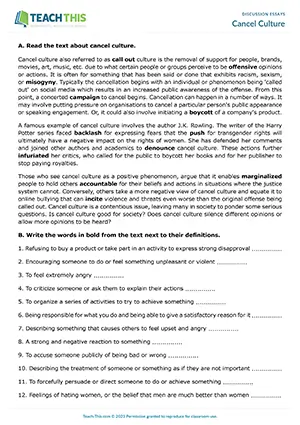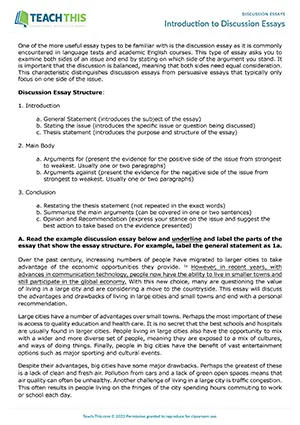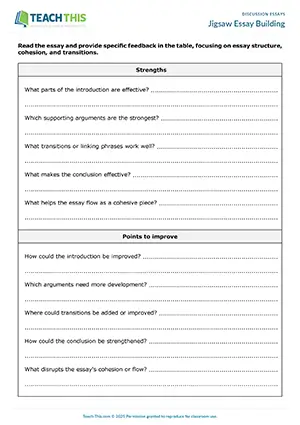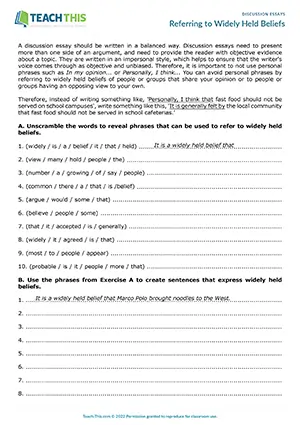Discussion Essays EAP Worksheets & Activities
Cancel Culture

EAP Discussion Essays Worksheet - Reading and Writing Exercises: Matching, Outline and Essay Writing - Speaking: Discussion, Communicative Practice - Group Work
In this comprehensive discussion essay writing practice, students read and discuss a text on the topic of cancel culture and then plan and write a discussion...
From Dice to Draft

EAP Discussion Essays Activity - Speaking and Writing Activity: Impromptu Speech, Writing a Paragraph, Peer Review, Communicative Practice - Pair Work
In this engaging discussion essay activity, students collaboratively generate ideas about a discussion essay topic and then write a paragraph using the ideas...
Introduction to Discussion Essays

EAP Discussion Essays Worksheet - Writing Exercises: Previewing a Model Essay Structure, Identifying Essay Features, Writing an Outline and Essay, Peer Feedback
In this free discussion essays worksheet, students are introduced to discussion essay structure and attempt a discussion essay writing practice. First, students...
Jigsaw Essay Building

EAP Discussion Essays Activity - Writing: Brainstorming, Paragraph Writing, Essay Writing, Peer Review and Feedback - Group Work
In this collaborative writing activity, students practice organising a discussion essay and improving cohesion between sections. First, in groups of four, students discuss...
Referring to Widely Held Beliefs

EAP Discussion Essays Worksheet - Writing Exercises: Unscrambling, Writing Sentences, Writing an Outline and Essay - Speaking Activity: Freer Practice - Pair Work
In this productive discussion essays worksheet, students practice phrases used to refer to widely held beliefs and phrases that introduce reasons for those...

